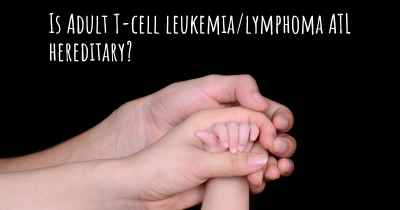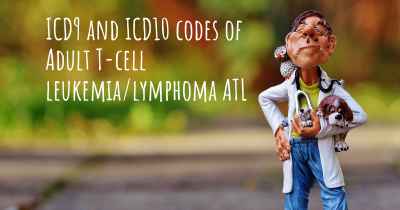What is the history of Adult T-cell leukemia/lymphoma ATL?
When was Adult T-cell leukemia/lymphoma ATL discovered? What is the story of this discovery? Was it coincidence or not?

Adult T-cell leukemia/lymphoma (ATL) is a rare and aggressive form of cancer that affects the immune system. It is caused by the human T-cell lymphotropic virus type 1 (HTLV-1), a retrovirus that primarily infects T cells. ATL was first identified in the 1970s and has since been recognized as a distinct type of lymphoma.
HTLV-1 was discovered in 1980 by Dr. Robert Gallo and his team at the National Cancer Institute. It was the first human retrovirus to be identified and is primarily transmitted through sexual contact, blood transfusions, and from mother to child during breastfeeding. HTLV-1 infection is endemic in certain regions of the world, including southwestern Japan, the Caribbean islands, parts of Central and South America, and some areas of Africa.
The link between HTLV-1 and ATL was established in the early 1980s when researchers noticed a high prevalence of HTLV-1 infection among patients with a specific type of lymphoma. This led to the recognition of ATL as a distinct clinical entity. ATL is characterized by the proliferation of abnormal T cells, which can infiltrate various organs such as the skin, lymph nodes, liver, spleen, and lungs.
ATL has four subtypes: acute, lymphoma, chronic, and smoldering. The acute and lymphoma subtypes are more aggressive and have a poorer prognosis, while the chronic and smoldering subtypes progress more slowly. The clinical presentation of ATL can vary widely, but common symptoms include lymphadenopathy (enlarged lymph nodes), skin lesions, hepatosplenomegaly (enlarged liver and spleen), and hypercalcemia (elevated calcium levels).
Research into the pathogenesis of ATL has revealed several key molecular and genetic abnormalities. HTLV-1 infects T cells by integrating its genetic material into the host cell's DNA. This integration disrupts normal cellular processes and leads to the dysregulation of various genes involved in cell growth and survival. Additionally, HTLV-1 encodes a viral protein called Tax, which plays a crucial role in the development of ATL. Tax promotes cell proliferation, inhibits DNA repair mechanisms, and evades the immune system's surveillance.
Diagnosing ATL involves a combination of clinical evaluation, imaging studies, and laboratory tests. Biopsy of affected tissues is often necessary to confirm the diagnosis and determine the subtype of ATL. The presence of HTLV-1 antibodies in the blood can also be detected using serological tests.
Treatment options for ATL depend on the subtype and stage of the disease. Chemotherapy is the mainstay of treatment for acute and lymphoma subtypes, often combined with targeted therapies such as monoclonal antibodies. Allogeneic stem cell transplantation may be considered for eligible patients. The chronic and smoldering subtypes may be managed with watchful waiting or low-intensity chemotherapy.
The prognosis for ATL is generally poor, with a median survival of less than one year for the acute and lymphoma subtypes. The chronic and smoldering subtypes have a more favorable prognosis, with median survival ranging from several years to over a decade. However, ATL remains a challenging disease to treat, and novel therapeutic approaches are needed to improve outcomes.
Prevention of ATL primarily involves reducing the transmission of HTLV-1. This includes practicing safe sex, avoiding sharing needles or other drug paraphernalia, and screening blood donations for HTLV-1. In endemic regions, efforts to raise awareness about HTLV-1 and promote testing and counseling are crucial in preventing new infections.
In conclusion, ATL is a rare and aggressive form of cancer caused by HTLV-1 infection. It was first identified in the 1970s and has since been recognized as a distinct type of lymphoma. The link between HTLV-1 and ATL was established in the early 1980s, leading to advancements in diagnosis and treatment. However, ATL remains a challenging disease with a poor prognosis, highlighting the need for further research and therapeutic innovations.








